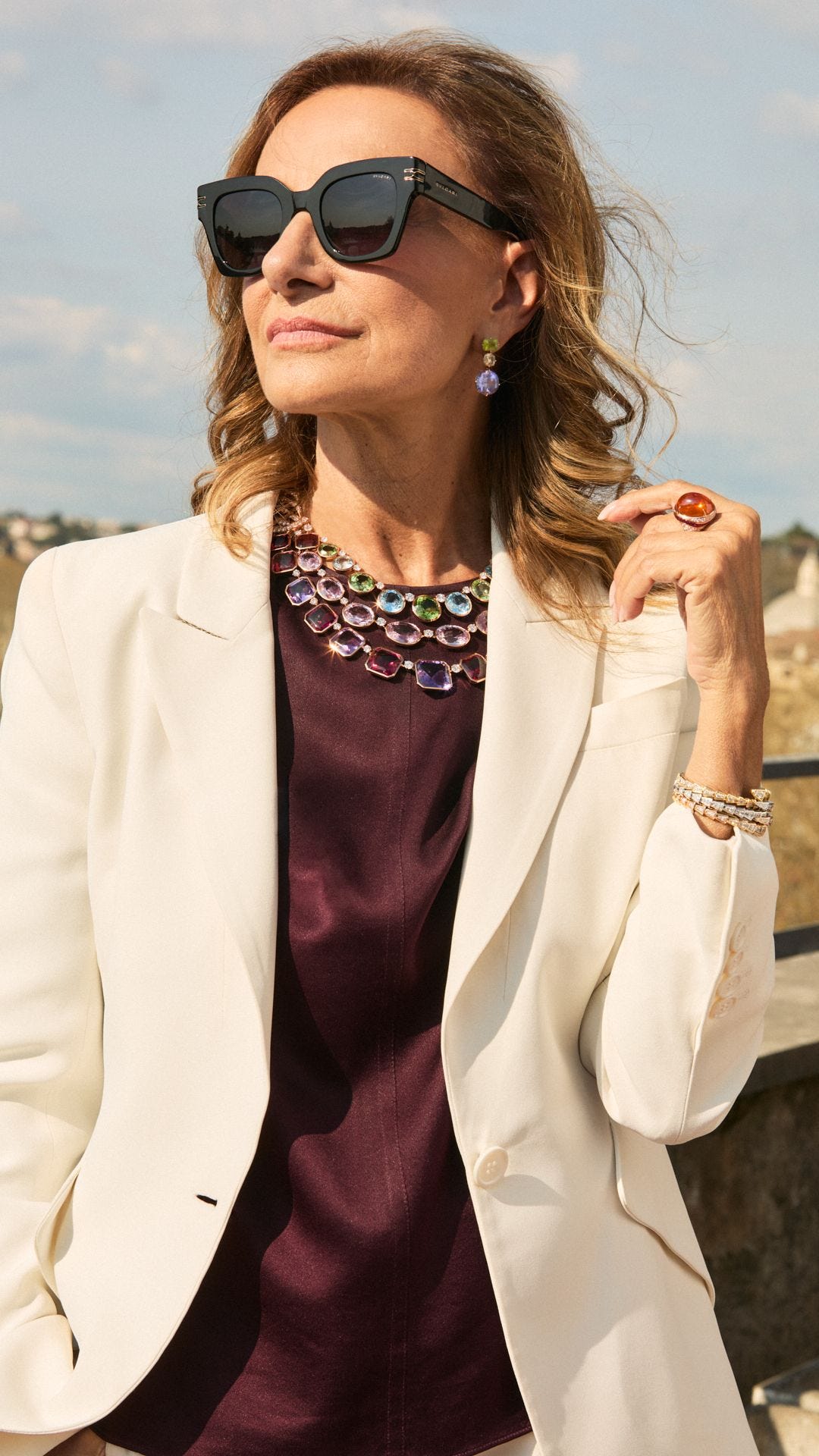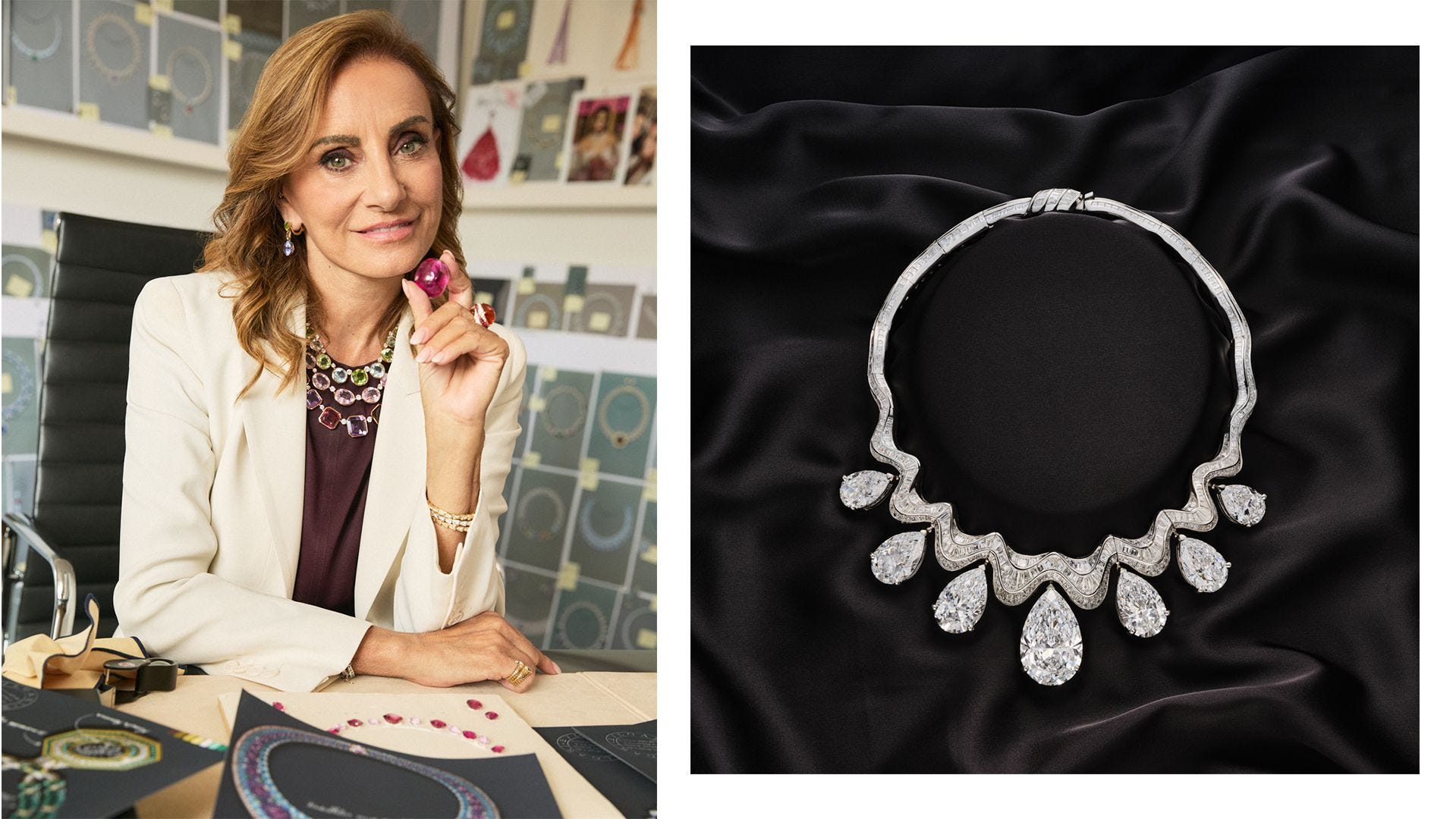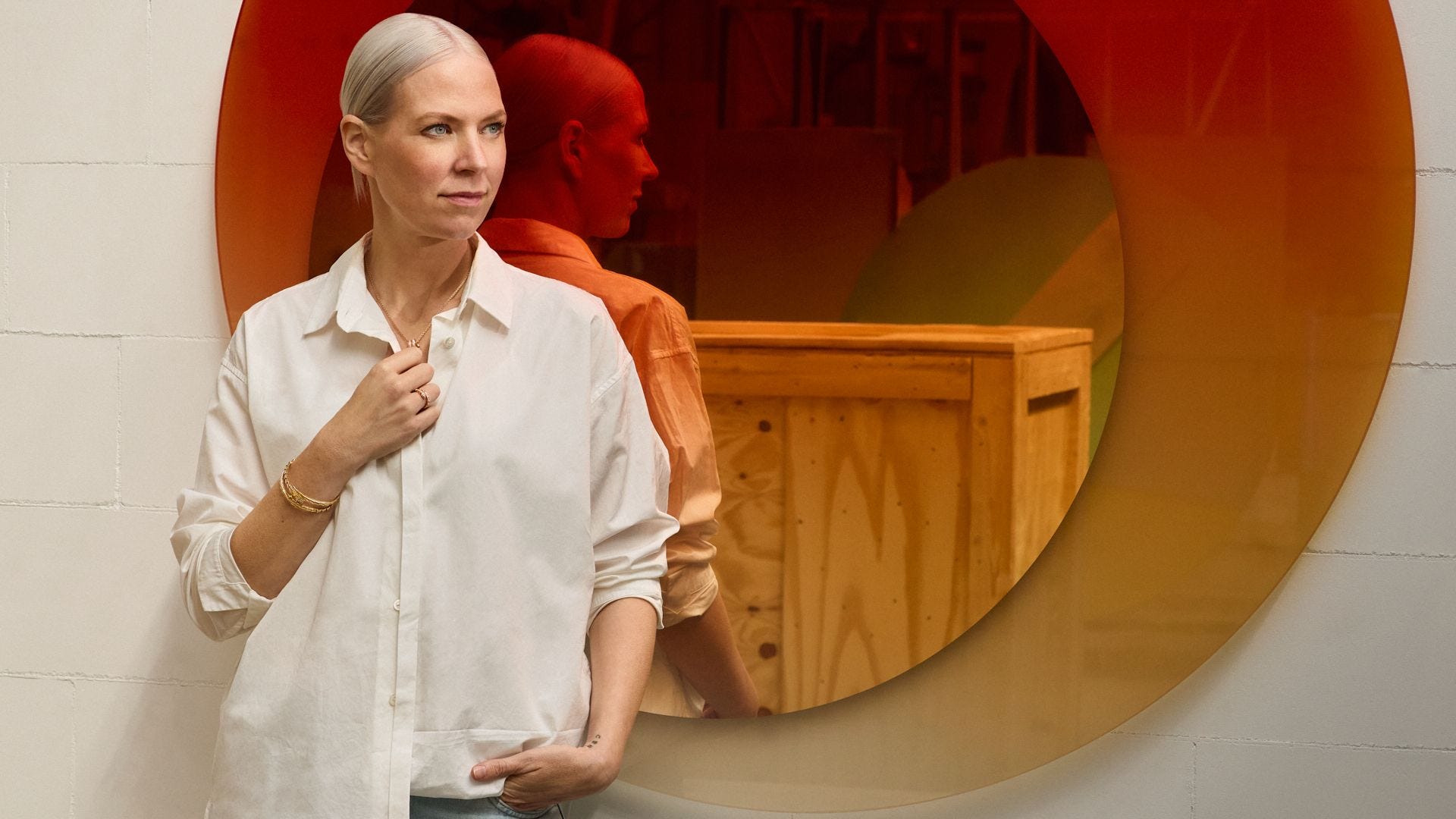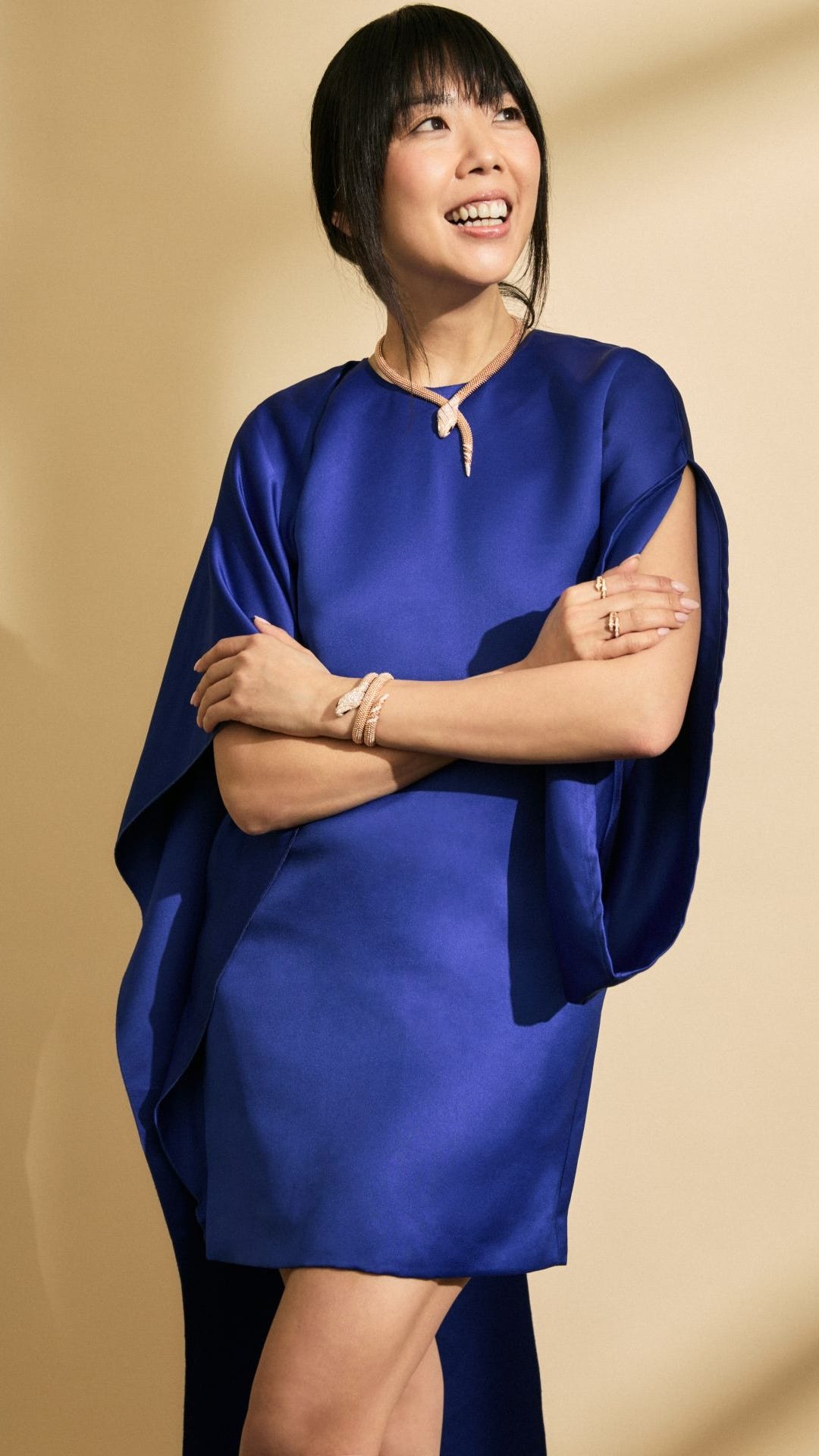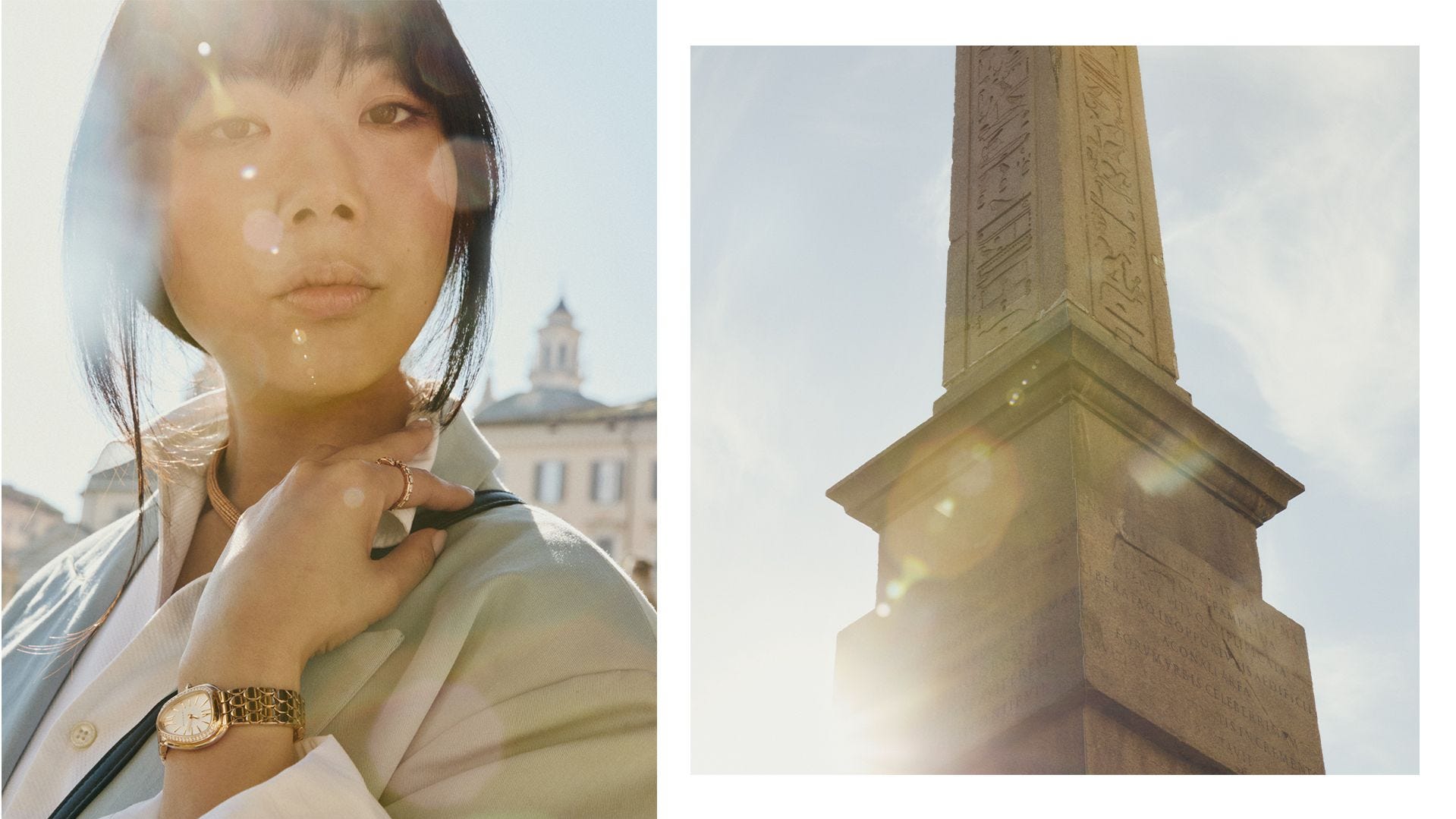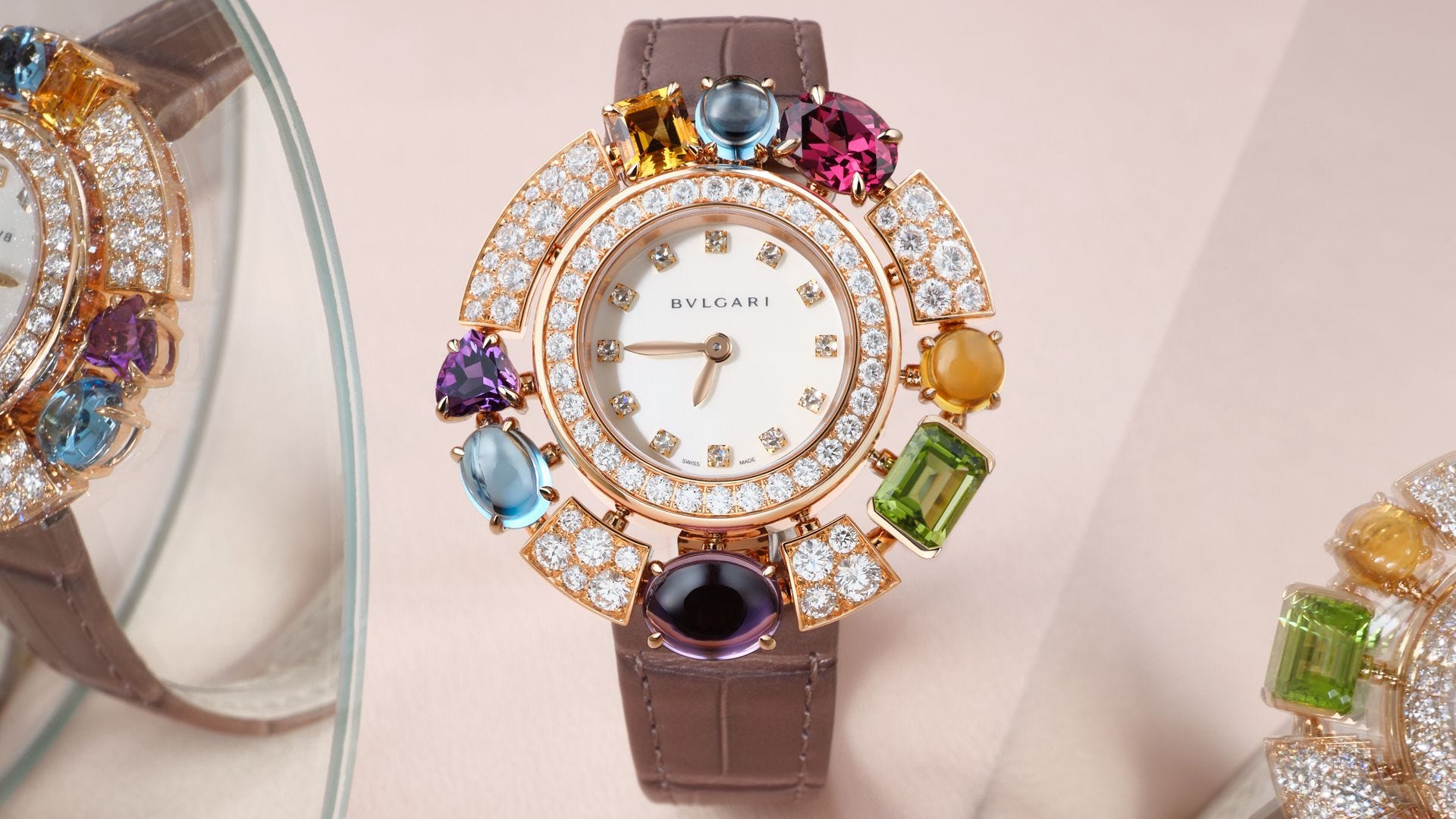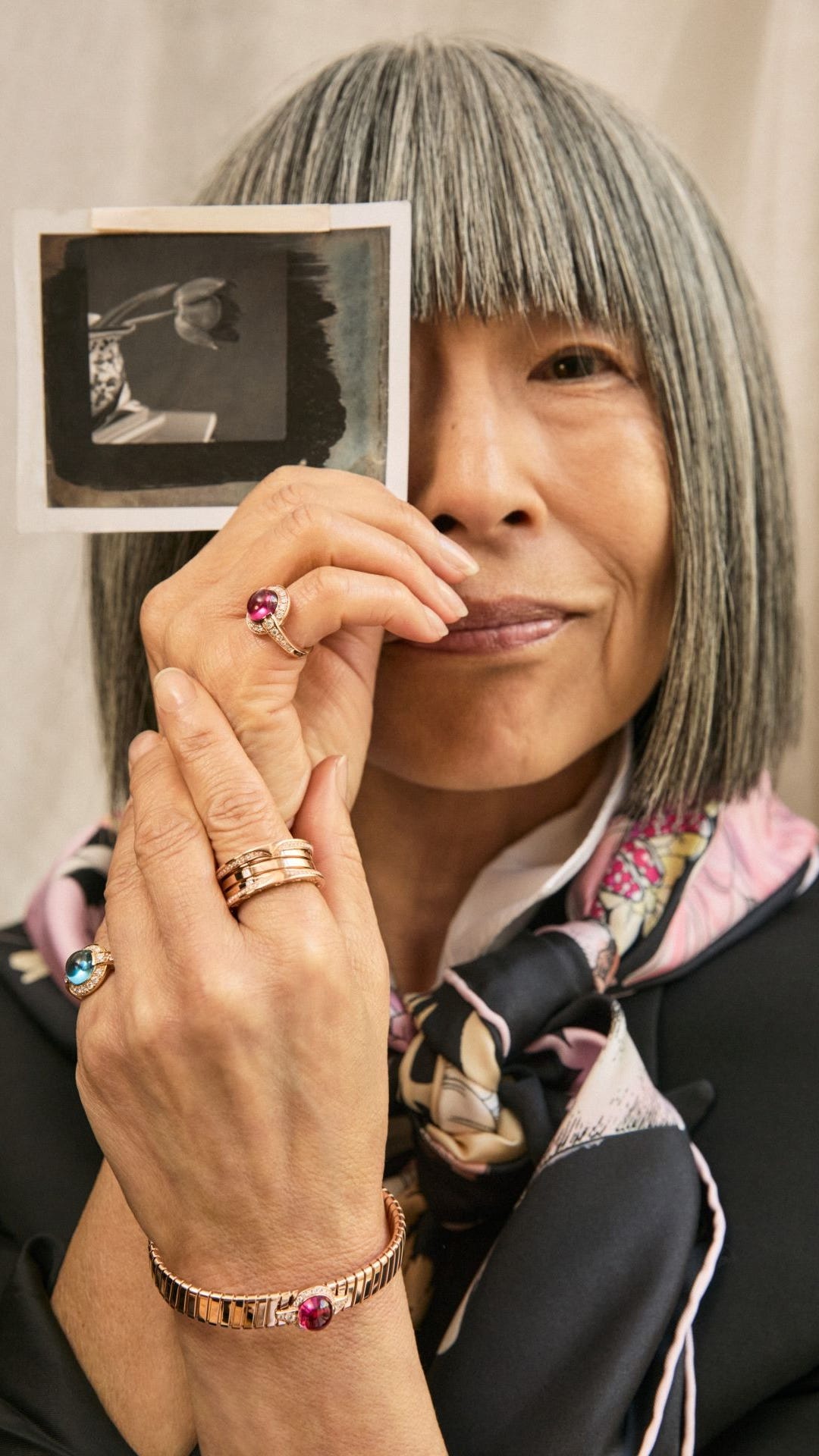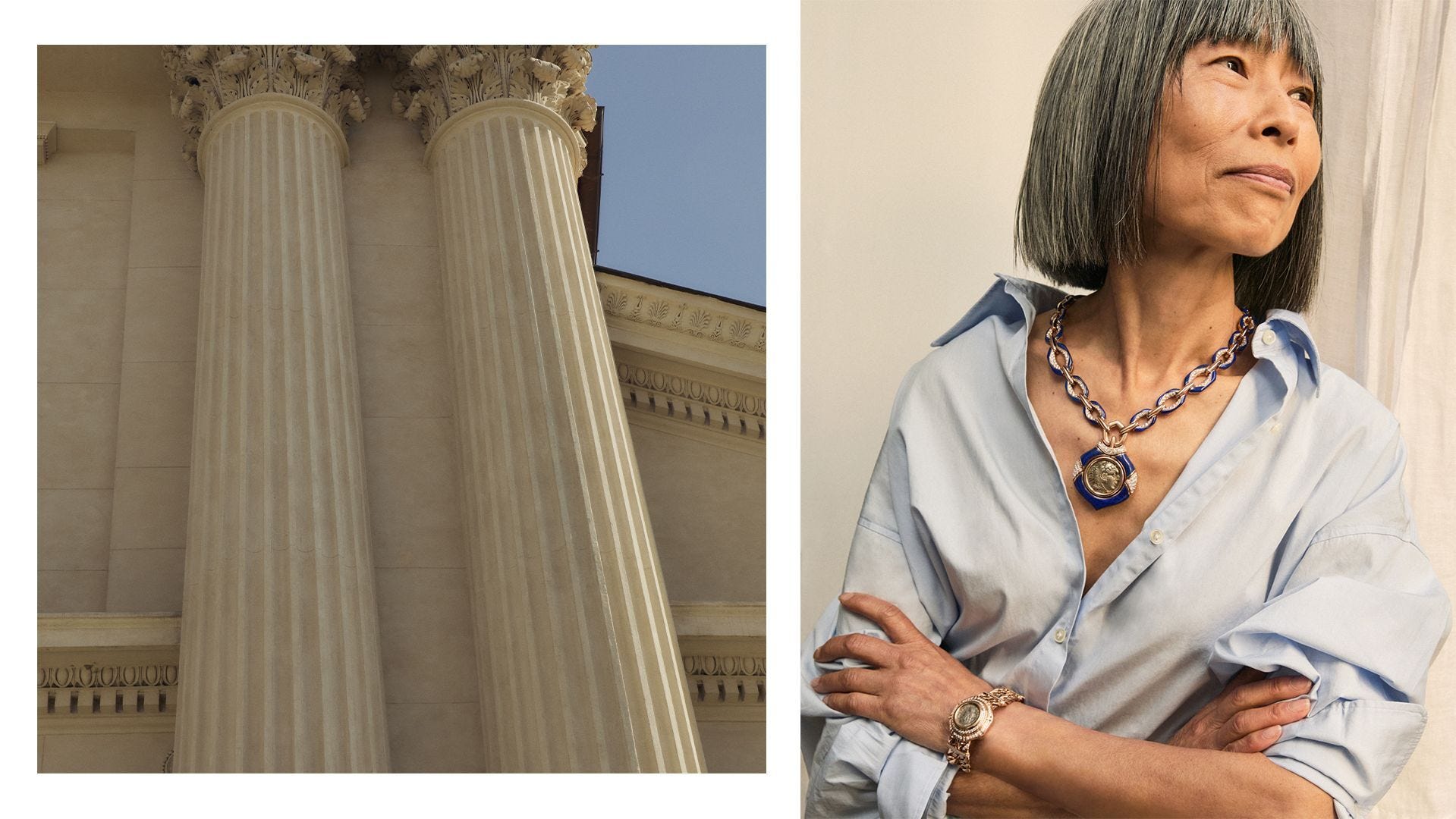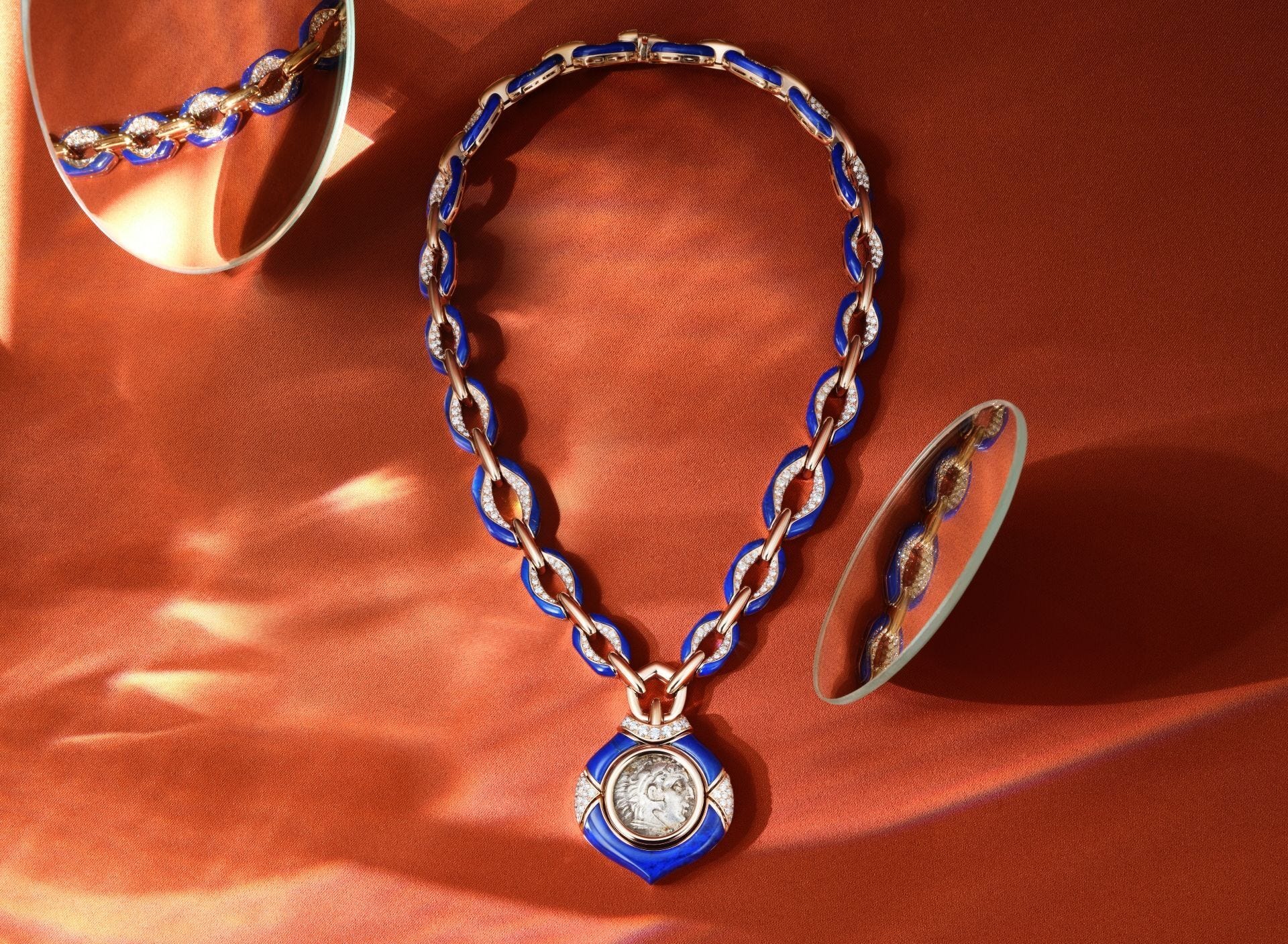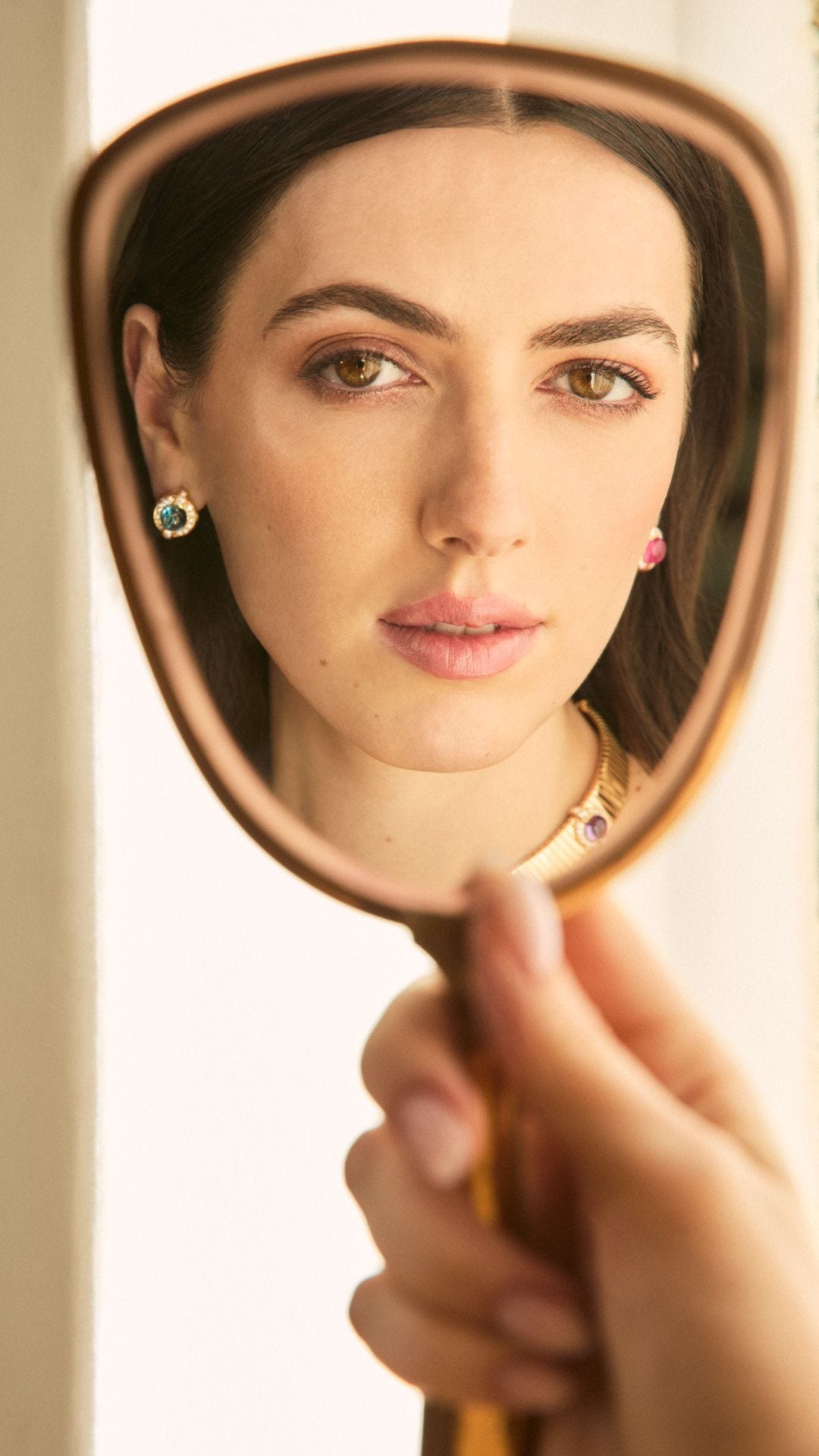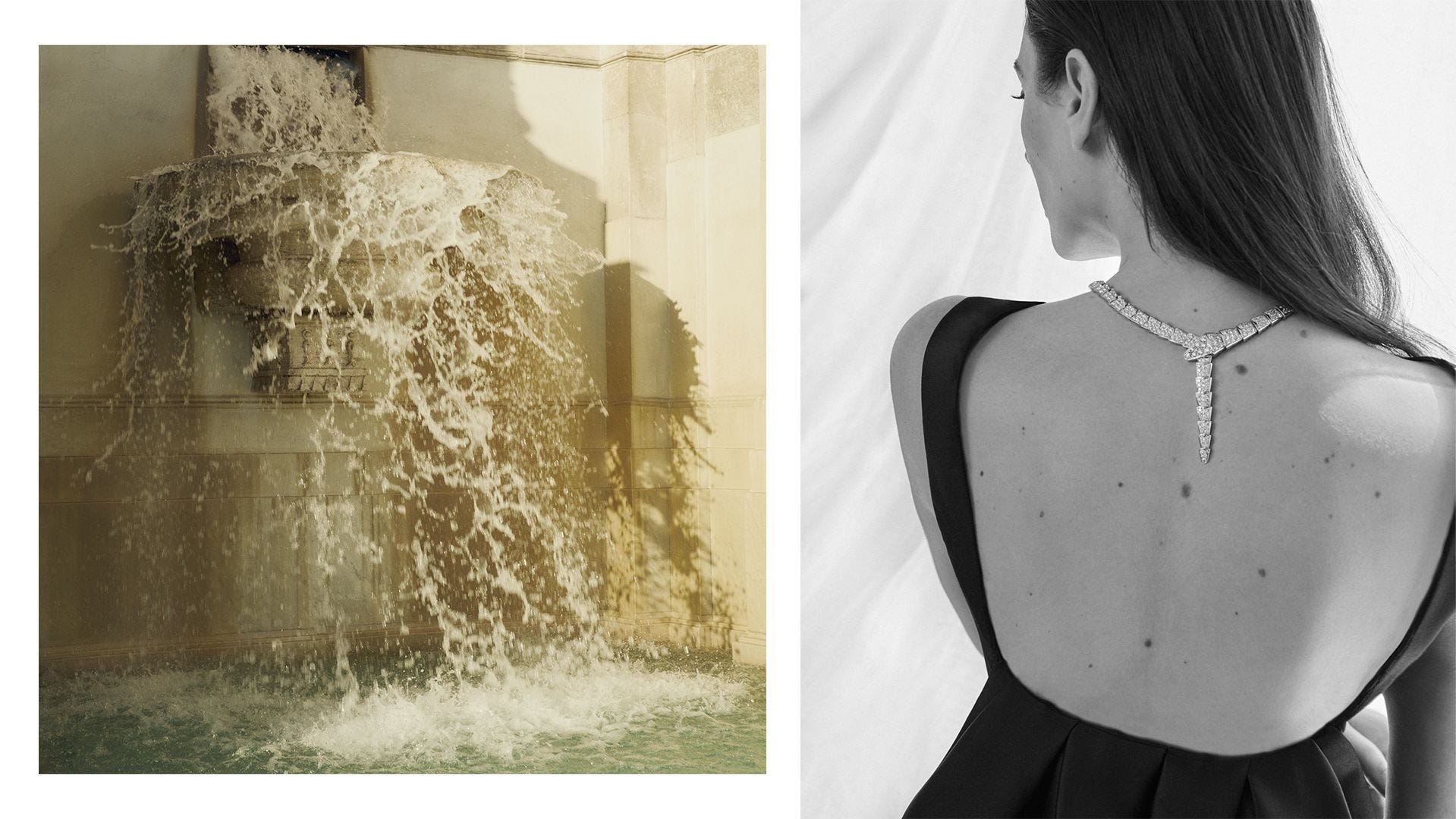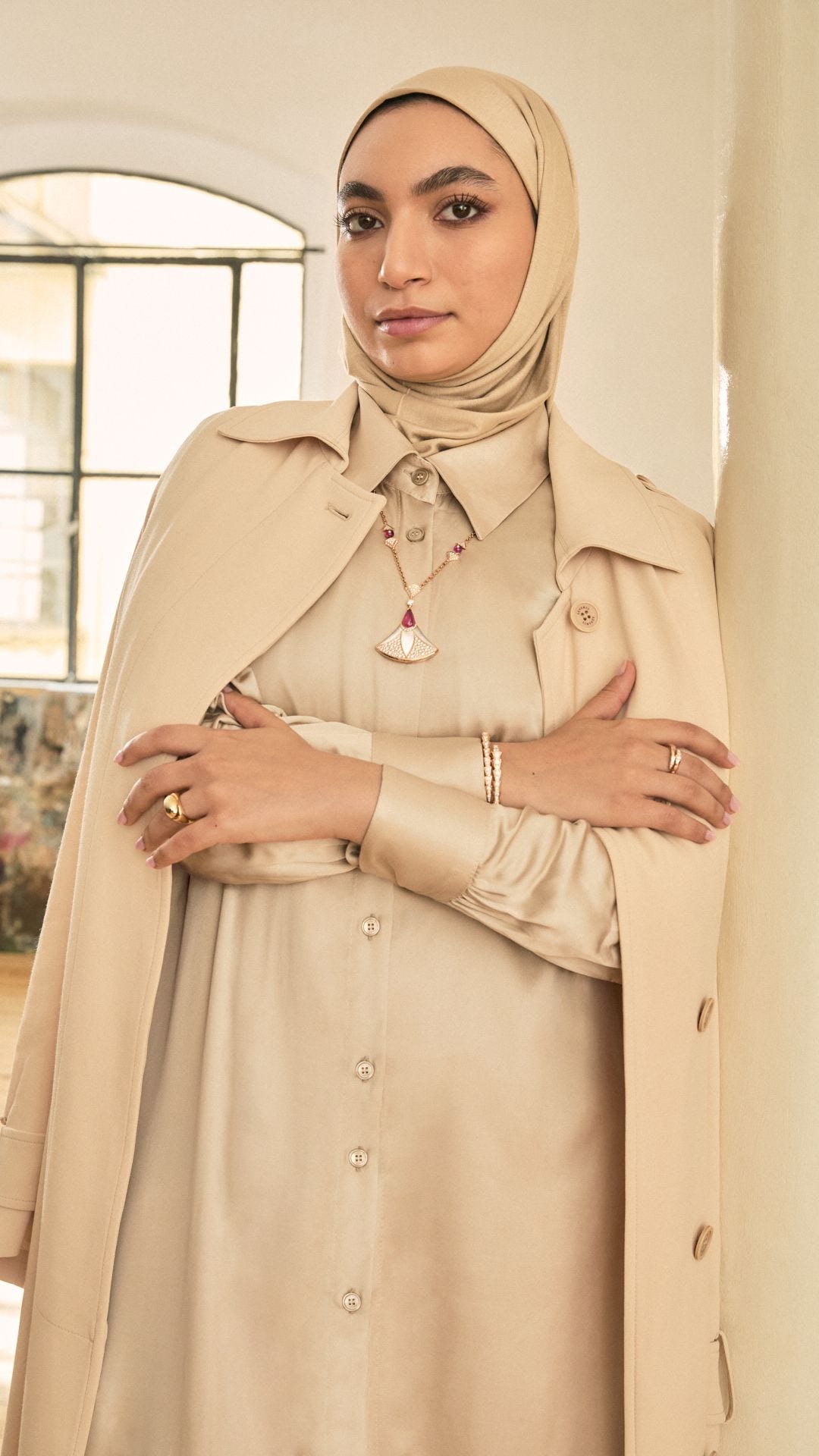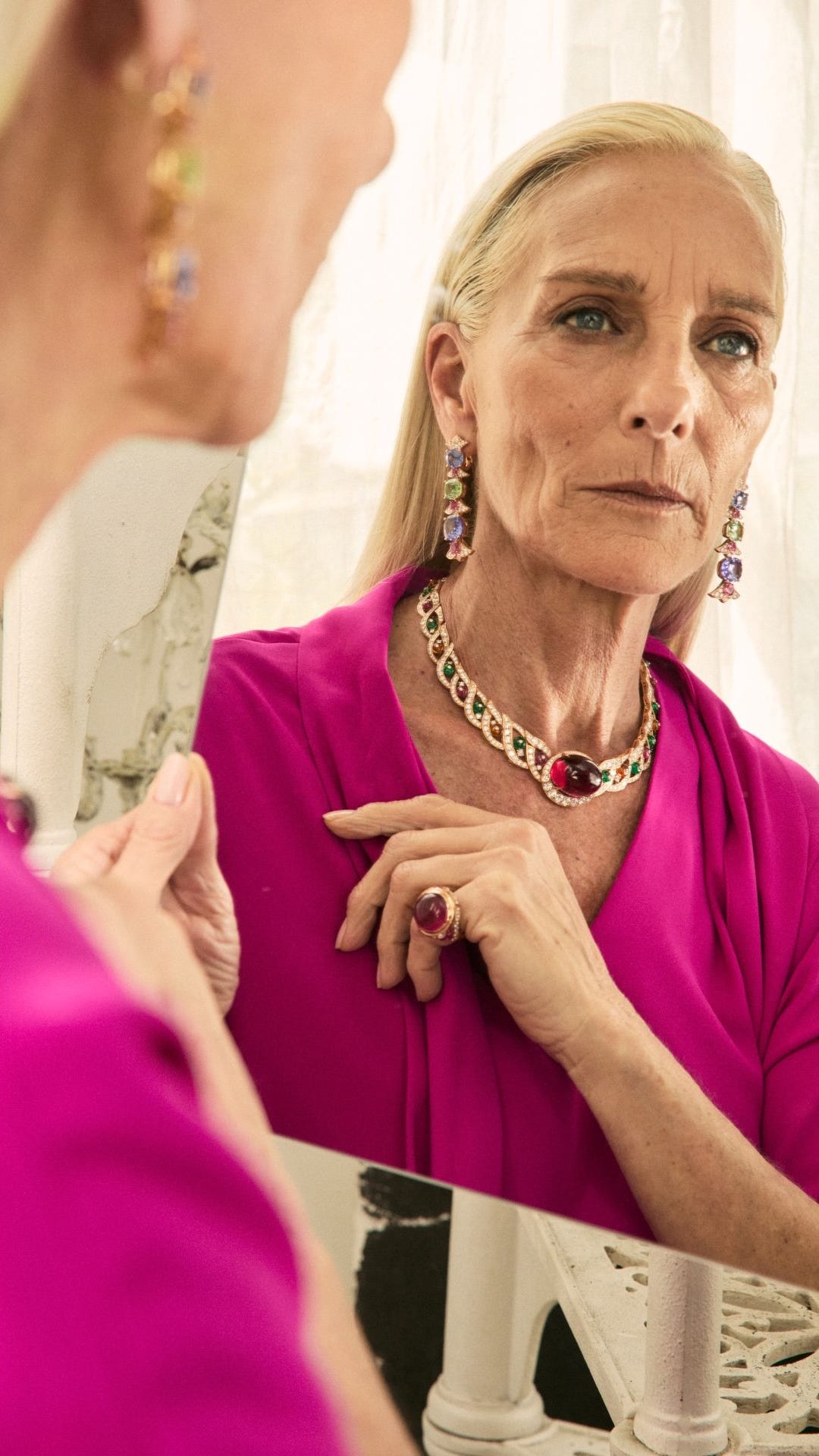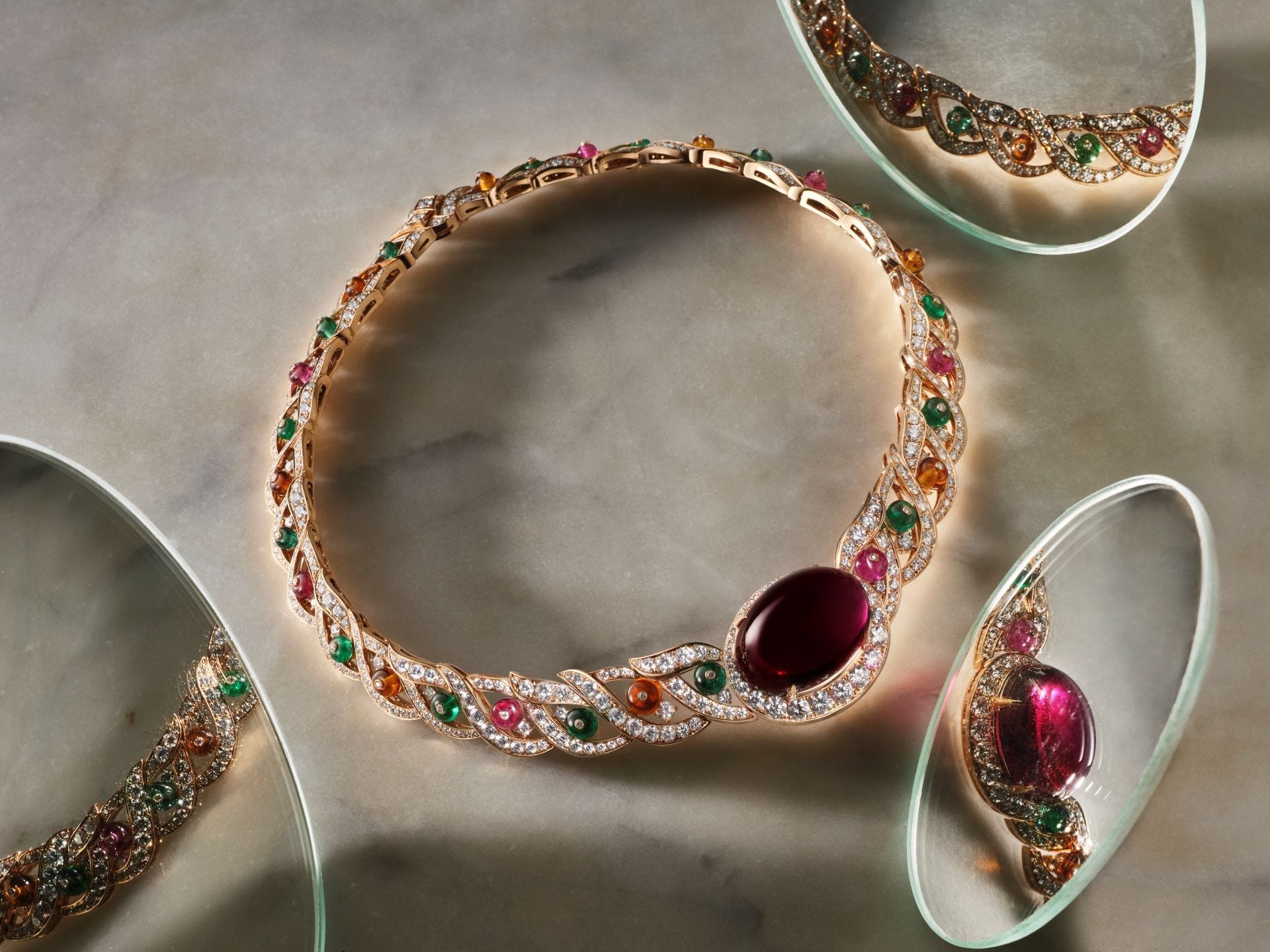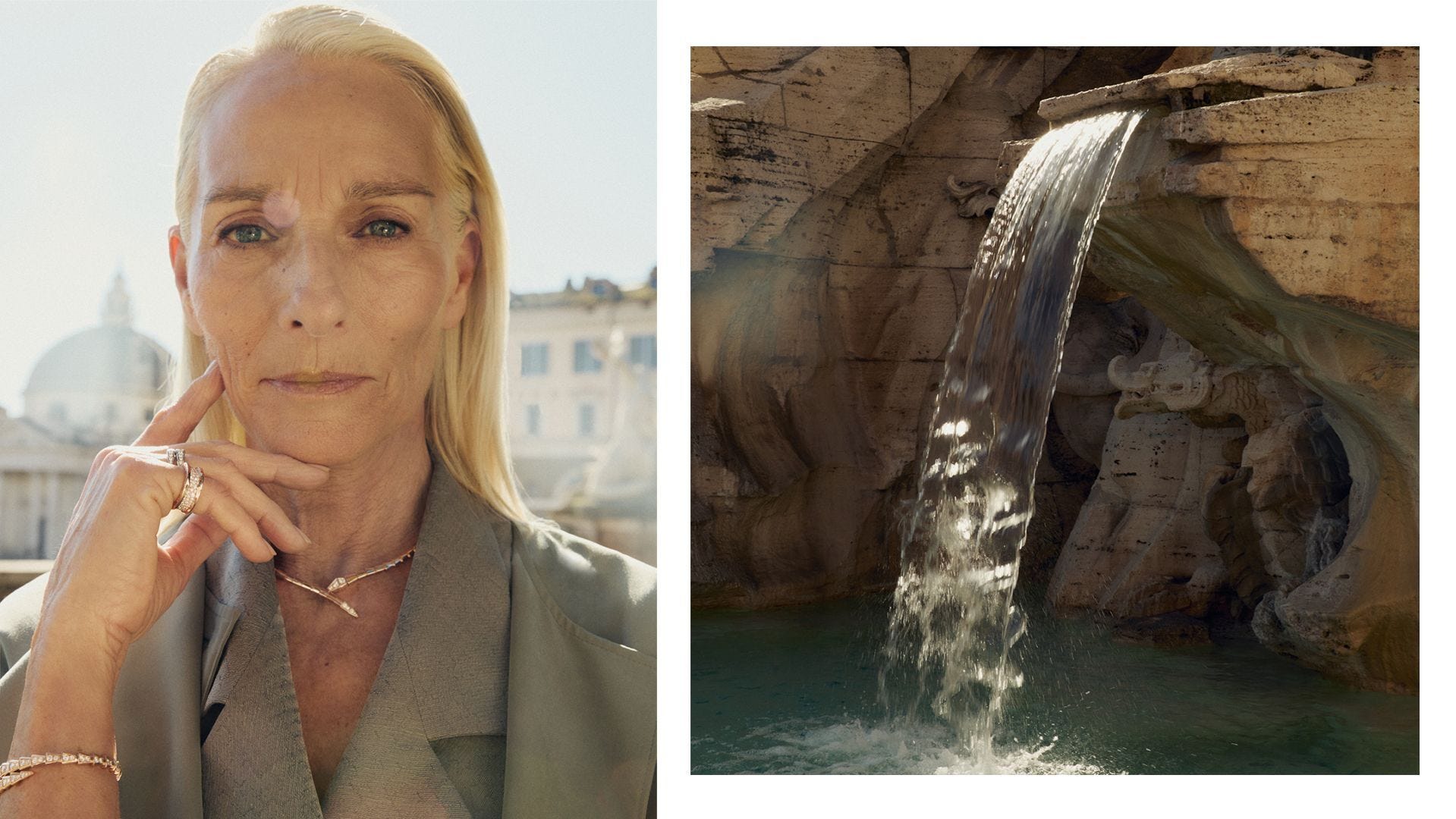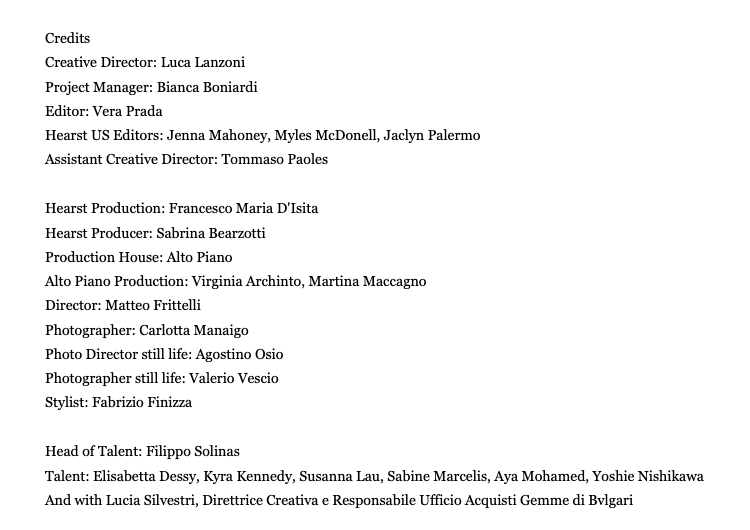As anyone who has visited even once recognizes—and remembers forever—Rome, the Eternal City, has a warm, vibrant light all its own. Every day it appears anew, starting at that magical moment when the darkness of night gives way to dawn and a new day comes to life. This light shines on the city’s legendary monuments and statues, on its baroque volutes, on the lush foliage of its gardens. It bathes the facades of the travertine buildings, and it sparkles like diamonds in the jets of the countless fountains.
This light, above all else, is why only Rome could be the setting for the stories you are about to read, those of extraordinary women of different ages, backgrounds, and cultures united by style and creativity, courage and self-consistency and their ability to change. We spoke with these seven women—Lucia Silvestri, Sabine Marcelis, Susanna Lao, Yoshie Nishikawa, Kyra Kennedy, Aya Mohamed, and Elisabetta Dessy—to celebrate an unparalleled moment: the 140th anniversary of Bulgari, founded by Sotirio Bulgari in 1884 when he opened his first store in Via Sistina, above the Spanish Steps. The celebration also attracted many international stars and celebrities, who flocked to Rome for the unveiling of Aeterna, the collection that showcases Bulgari’s ability to continually reinvent itself while drawing inspiration from its heritage.
The light of Roman mornings—direct but soft—is filtered through the colors of the priceless gems on the desk of Lucia Silvestri, creative and gems-buying director for Bulgari, who has been generating iconic creations for 35 years. “Playing with colors, I like to imagine necklaces for everyone that are apparently impossible,” she says.
Her most recent creation is just that: (almost) impossible. The dreamily named Serpenti Aeterna necklace, a tribute to the Maison’s 140 years, is composed of 140-carat D Flawless drops of pure light from a single rough diamond. Silvestri,. “Bulgari’s approach to jewelry has always been beyond convention,” says Silvestri. “And it is from this extraordinary convergence of creative originality and the spirit of innovation that some of its most legendary icons have been born—experimenting with materials, aesthetics and craftsmanship.”
Treating the earth as a source of infinite wealth, Silvestri and her team select gems to define or complete the design of their magnificent creations. “Working with gems means working with eternity, because I consider them gifts from nature that we have to take care of.” What is eternity for Bulgari? “Always being there, through our jewelry.”
This was perhaps the most important lesson she received from the Bulgari family. “It has not been easy, being a woman in an environment that is still very male, but what has always guided me has been my passion for this work and the incredible energy that binds me to the stones.”.
To analyze precious stones, it’s essential to look at them in natural light as Silvestri does each morning, scrutinizing rubies and emeralds in the sparkling sunlight on the balcony of her studio overlooking the Tiber. Her morning ritual allows her to assess the gems’ purity at the very moment in which they are being infused with the vital energy of Rome. The same energy that the jewels will then bring to red carpets, parties, openings, and royal weddings, to everyday life as well as to the most special moments of the women who will wear (and love) them forever.
Similar energy takes shape in the immersive installation that Bulgari has given to the city of Rome. Created by Dutch artist and designer Sabine Marcelis, it is a true tribute to the Eternal City and its extraordinary bond with the Maison.
Known for her creations that reinvent space, Marcelis works in a studio full of colored samples of resin and glass. “My work consists of looking at everything in a new light to re-imagine it,” she says. “Every project I do is always a kind of rebirth: Each time I try to change perspective and thus go beyond my limits.” Her inspiration, she says, comes from light and how it lets her bring different materials to life. “I believe that creativity consists in taking what you have and re-interpreting it and thinking about it in a different way, illuminating it with a new light so the result is unexpected and somehow surprising.”
For Marcelis, evolving means returning to the essentials, a constant regard of the past in order to push herself ever further into the future. “My goal as a designer is to achieve perfection so that objects are eternal.” This quest for eternity, for constantly being reborn, is represented on the one hand by Bulgari’s iconic Serpenti Viper line worn by Marcelis, and on the other by “Vista Aeterna,” the installation the designer created to mark the Maison’s 140th anniversary, made of mirrors colored with the nuances of the Roman sunrise. As they move, the mirrors reflect the magnificence of Rome and those who find themselves admiring its beauty, always providing a new perspective on the Eternal City. “Every project I realize is actually a dialogue with eternity, because it constitutes a kind of rebirth,” Marcelis says “With each new beginning, I feel as if there is never an end.”
Susanna Lau, a British journalist and fashion blogger known as Susie Bubble, has a similar vision. She became famous during the early age of blogs and self-publishing, when creators with something to say began to use the internet as a blank canvas on which to imprint their stories. Lau also speaks about eternity, creativity, and rebirth, which for her take on special meaning. “I have experienced several rebirths in my life,” she says. “Fashion, for example, was just a hobby at the beginning, and only later did it become my career. This second rebirth—after motherhood—gave me a new connection with my body, and my style also changed. At this moment in my life, both personally and professionally, I feel more comfortable in my skin than ever before.”
The bond she has with Rome is strong: “How can you not love this city? Here the layers of history are physically visible. It is always on the verge of changing again, like a snake.” The serpent references the meaning that eternity has for Susie: a passage between different stages of life. It’s a symbol also dear to Bulgari, which has made it the heart of its iconic Serpenti collection, from which Susie wears a pink gold necklace, bracelet, and ring with onyx elements, pear-shaped diamonds, and pavé-set diamonds.
This synergy of avant-garde geometries and sensual curves was achieved through the creativity and savoir-faire of Bulgari’s master craftsmen. Such creativity is also an invaluable resource for Lau, who in her work is always looking for a point of view that deviates from the ordinary. “But like all creative people,” she says, “what I really aspire to is the test of time, the sense of permanence and eternity.”
A similar sort of eternity—the ability to stop time, to make the ephemeral permanent—is the very magic of photography. One of the major contemporary interpreters of still life is Yoshie Nishikawa, who has always investigated the link between life and time. “When the light hits the subject, that is the moment I love the most,” she says. “When I shoot, I feel a connection with the subject, an energy that is able to transcend time and space and that gathers the whole universe into itself.”
Niskikawa also has a special relationship with light. Every morning she chooses the brightest spot in the room and starts the day by praying: “I close my eyes and thank the universe for the new day it is giving me. For a photographer, even the absence of light is important. And there, in the darkness, with the light filtering in from under my closed eyelids, I feel connected with eternity. Every morning it is as if my life begins again. And so toward eternity.” Asked what makes a shot, a work of art, eternal, she simply responds, “Beauty.”
On her work table are prints of old photographs, books on art and architecture. And Nishikawa too has a bond with this city and its light. “For me, Rome is the pinnacle of beauty,” she admits with one of her open, sincere smiles. What fascinates her, she says, is the history that permeates here. Her eyes follow the light reflected in the metals and stones of the jewelry she wears—in particular, a model from Bulgari’s High Jewellery Coin collection, in rose gold with lapis lazuli elements and pavé-set diamonds, embellished in the center with a silver coin dating back to the Macedonian kingdom of between 336 and 323 B.C.E. “It becomes evident that those who make photographs have in common with those who make jewelry not only a sense of time, but also a sense of beauty,” she says. “Look at how the light illuminates the stones of these rings and makes them come alive: Both the photographer and the goldsmith think about the light that will illuminate the object. We seek purity, the elegance that can elevate the beauty of the object in front of us and make it eternal. For me, photography is the only tool we have to stop time. Photographs make eternity possible.”
Jewelry and photographs are not just objects that immortalize a moment or a feeling. They also share the destiny of being passed down from generation to generation, having “another life every time and being reborn,” says Kyra Kennedy. A member of the legendary family, she learned from childhood the value of words like legacy and heritage—even her move to Italy was inspired by the memory of her late mother, who loved the country.
Now Kennedy, a student of fashion, has founded her own clothing line. “I would like to be able to capture beauty and inspire others through my creations,” she says. “My brothers and sisters pursued the same political careers as my father, while I followed in my mother’s footsteps. It was she who taught me—and this is something she learned when she lived in Rome—that eternity is something that lives on even after this life. Like love, it has no limits.”
Hers is a fashion idea that brings glamour into everyday life, a chic and versatile style, an exquisitely Gen Z reinterpretation of the quiet luxury that we have come to know, appreciate (and copy) on the latest catwalks. In the looks she shares on social media—“I learned all my style secrets from my mother,” she confides—clothes, accessories, and jewelry are chosen and mixed with a versatile spirit that enhances elegance through attention to detail. One example is the 18-carat rose gold Bulgari Tubogas choker she wears: flexible tubular bands of precious metal fused without soldering with a cloison coulissante clasp system that enhances the chromatic vibrancy of five coloured cabochon-cut gems, framed by a dazzling pavé of diamonds.
“In Egypt, giving jewelry between mothers and daughters is a very strong tradition,” says social change-maker and fashion enthusiast Aya Mohamed, aka Milan Pyramid (a name she chose because it represents the union between her culture of origin and Italy, where she was raised), adding that she inherited her own passion for jewels from her own mother. “They make the wearer shine.”
Mohamed speaks of the rebirth she is experiencing currently, a whole new chapter as both a woman and as a creative. “I think that being a woman born in Egypt and raised in Italy is a constitutive point of my identity, a set of distinctive characteristics without which I would not be me,” she says. “My commitment to bringing people from different cultures together, putting them at the same table, inviting them to eat together, comes from here.” She describes herself as a cultural catalyst: “I use art and culture to bring about positive change in the world: For me that is what eternity is: a legacy of goodness, kindness, and love for the world.”
And the art and creativity of fashion is a key focus for Mohamed: “For me it is another way to bring people together and to send positive messages,” she says. “Wearing a necklace like this one—the Serpenti Viper in white gold with pavé diamonds—with a hand-decorated silk scarf makes me feel special. Just as it is special to share among women of different generations and cultures this idea of finally putting ourselves in the light.”
For model Elisabetta Dessy, true style is revealed in the kindness of our gestures. Dessy, a former Olympic athlete, model, wife, mother, sister, and, “I like to think,” she says, “also a good friend,”’ was born in Rome and has lived most of her life here. And she is currently in the midst of what she calls another rebirth: “The first was when I became a model from an Olympic athlete, and the second when I became a mother,” she says. “The third was when my husband passed away and I found myself with two children, having to be mother and father at the same time. I took care of them for years, I taught them the value of kindness, and today they take care of me. They are the ones who pushed me to enter my fourth rebirth, when at almost 60 years of age I decided to go back to modeling.”
Dessy was in fact among the models walking the catwalk in Rome during the presentation of Bulgari’s new Aeterna Collection. And amid her new professional Renaissance, she has set herself the goal of showing women of her own age that a woman is no less important as she grows older. “It’s definitely not over,” she says. “Eternity is in how we act, how we live, what we create. Our hair, our skin, our eyes, even our wrinkles, are a moment of eternity.”

